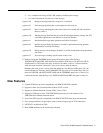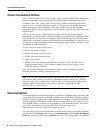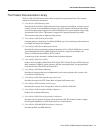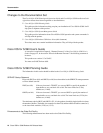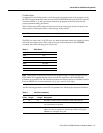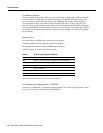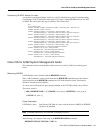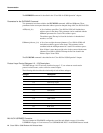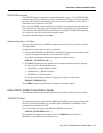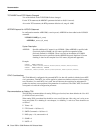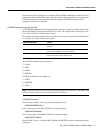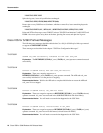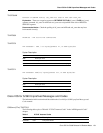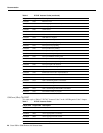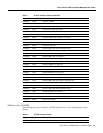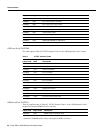
Cisco IOS for S/390 Release 2.0 Release Notes 15
Cisco IOS for S/390 Customization Guide
NETSTAT RTM Command
The NETSTAT diagnostic commands are described beginning on page 5-12. The NETSTAT RTM
command can be used by a Telnet user to display a continuous activity report on all active hardware
interfaces. The frequency is determined by the value in seconds, and defaults to 9 if not entered.
Permissible values are between 1 and 32767.
Once activated, the RTM command will continue to display a time-stamped connection counter, and
LNI counts and rates. The display itself will appear after the specified interval in seconds, but the
rate is based on a time difference between now and the last sampling. If multiple RTM commands
are in effect, the rates will not always be consistently smooth.
To terminate the RTM command, press Enter.
Capture of User Data in a TLI Trace
You can use the trace facility or TCPEEP to capture user data in a TLI trace. The data is from the
TPL field DABUF.
To capture and view user data, two actions are required.
• The filter MAXTLIDATA (alias MTLIDATA or MTDATA) must specify the maximum amount
of data to be captured. The default is zero; the maximum is 65,535.
For example, the following command will capture up to 100 bytes of data:
GROUPS( ( TLI,'MTDATA( 100 ) ' ) )
• The FORMAT parameter must be specified for the maximum amount of data to be displayed.
You may also specify which translation to use:
— TLIDATA(nn) - mixed translation (default)
— TLIEBCDIC(nn) - EBCDIC translation
— TLIASCII(nn) - ASCII translation
For example, the following command will display up to 50 bytes of captured data:
FORMAT( TLIEBCDIC( 50 ) )
The TCPEEP command is described in the “Diagnostic Commands” chapter.
Cisco IOS for S/390 Customization Guide
The information in this section should be added to the Cisco IOS for S/390 Customization Guide.
TCPEEP NETIF Option
The default maximum data captured by the TCPEEP option NETIF is now 256 bytes of data, which
includes device header, IP header, etc. A new filter option, MAXDATA (alias MDATA), allows
resetting this to a maximum of 65,535.
This is an example of the usage of the MAXDATA (MDATA) filter option:
GROUPS( (NETIF,'MDATA( 512 ) ' ) )
This command will capture up to 512 bytes of data. The FORMAT options DATA(nn),
EBCDIC(nn), and ASCII(nn) still limit what is seen.



